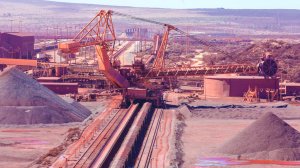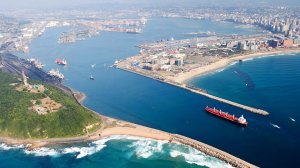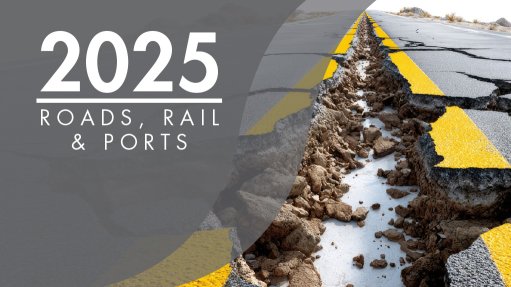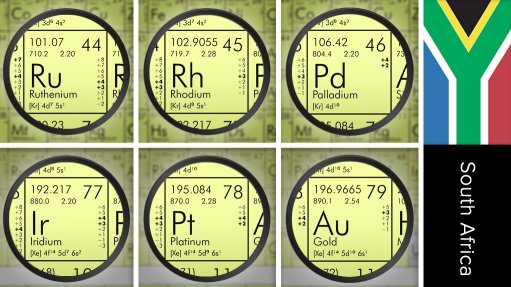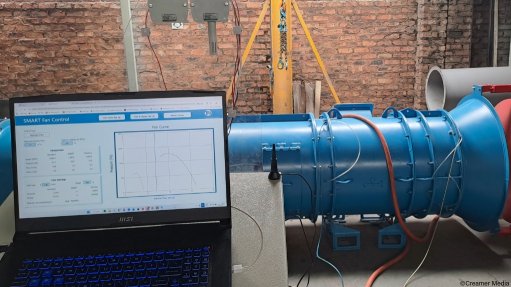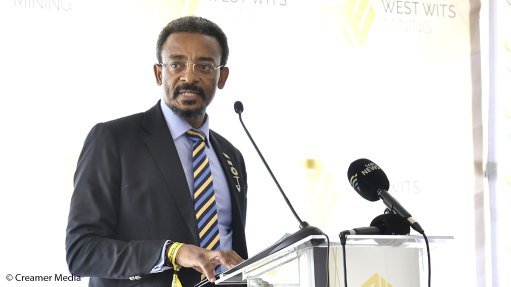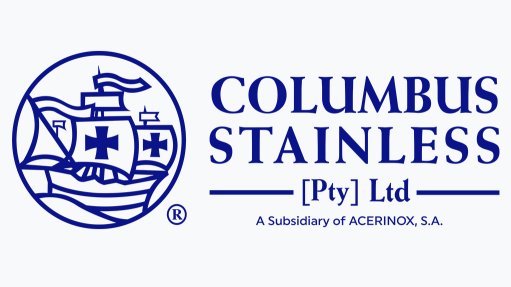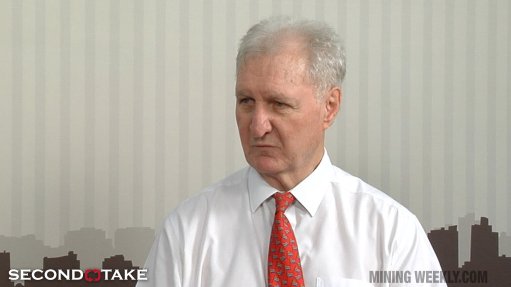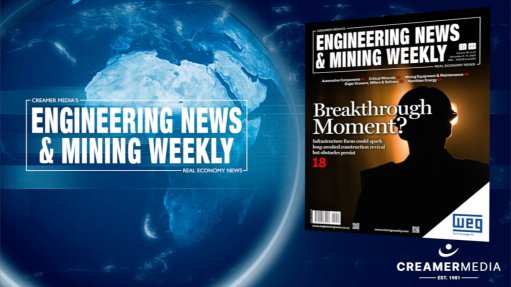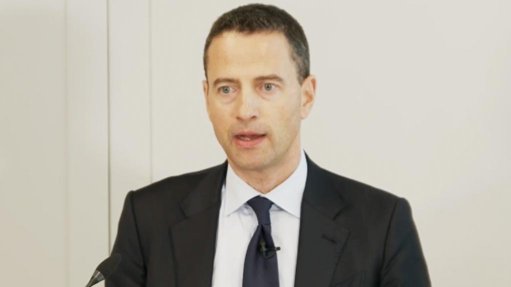South Africa iron-ore trade route to Europe could be green by 2029, study shows



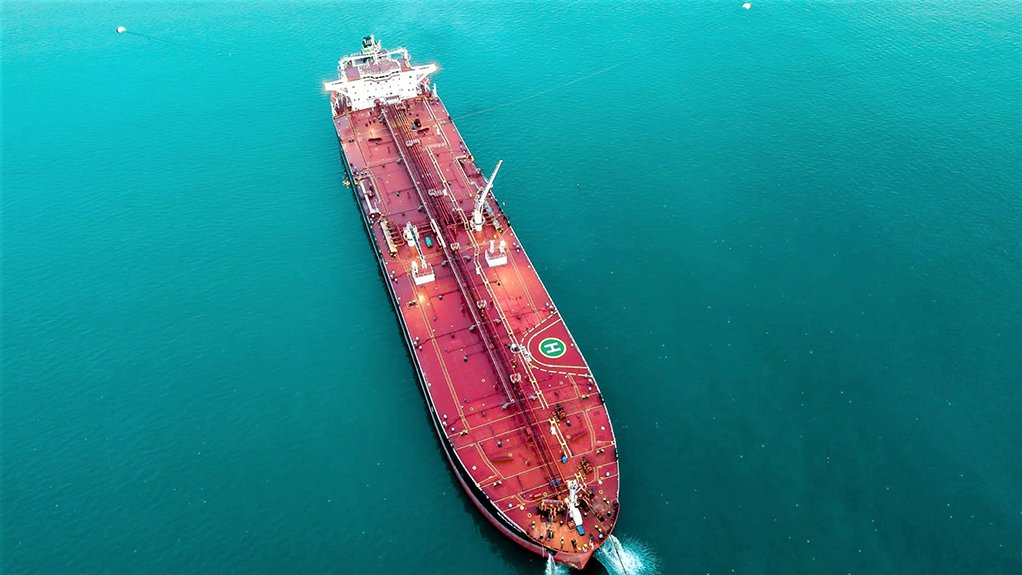
The iron-ore terminal at Saldanha Bay.
A Global Maritime Forum image.
A Global Maritime Forum image.
JOHANNESBURG (miningweekly.com) – The South Africa-Europe iron-ore trade route could go green as soon as 2029 and scale toward full decarbonisation by 2035, according to a study released by the Global Maritime Forum.
The feasibility study, produced in collaboration with a consortium created in 2023 – which includes Anglo American, CMB.TECH, Freeport Saldanha, VUKA Marine, and ENGIE – said the corridor linking Saldanha Bay in the Western Cape to the Port of Rotterdam in the Netherlands would be one of the first Global South-to-North green shipping routes.
South African iron-ore mining major Kumba Iron Ore, which operates two mines in the Northern Cape province and exports through Saldanha Bay, is an Anglo American group company and ENGIE is carrying out a major solar project in South Africa.
South Africa’s primary iron-ore export terminal located at Saldanha Bay is already planning the development of green hydrogen-linked green ammonia production, alongside port upgrades to handle bunkering operations.
In the green corridor’s initial years, ammonia-fuelled vessels will likely bunker in Rotterdam, which is one of the most mature ports in terms of its ammonia bunkering and safety frameworks. Meanwhile, Saldanha Bay will have the opportunity to build the infrastructure to become the long-term green ammonia production and bunkering hub for the corridor.
By 2035, the port could supply bunkering services to all corridor vessels locally, creating a dual-purpose facility that continues mineral exports while serving international shipping.
“This phased approach gives shipowners and fuel producers a clear timeline to work toward, and we now need coordinated action from policymakers and industry to make this a reality by 2029,” Freeport Saldanha investment facilitation associate Shanon Neumann stated in a media release to Mining Weekly.
“However, to help Saldanha Bay transition quickly, blending public and private funding can unlock investment in infrastructure and reduce the risks of early projects,” Neumann added.
The World Bank and World Economic Forum have both previously identified South Africa as a prospective participant in fuelling shipping’s decarbonisation. The green corridor could contribute towards turning this notion into a reality.
Announced green hydrogen projects near the ports of Boegoebaai, Saldanha, and Walvis Bay could meet the corridor’s fuel needs, including its high-demand scenario of 22 bulk carriers per annum by 2035. The possibility of such strong demand levels could mean a stronger business case for green hydrogen producers looking to secure enough offtake volumes to finalise investment decisions and accelerate new projects.
Add in the necessary financing, potential tax incentives, and port tariff discounts for fuel production and bunkering build-out at Freeport Saldanha, and South Africa could gain a competitive edge as an international bunker supplier.
The country’s hydrogen sector may be able to contribute 3.6% to the country’s GDP by 2030, with shipping and steel well-positioned to become early offtakers of the gas and its derivatives.
This green shipping corridor offers the opportunity to strengthen South Africa’s export competitiveness, future-proof a strategic port, and support the country’s Just Energy Transition through local value chains, skills development, and community benefits.
Regional and global regulations could materially improve the business case for the corridor. Europe’s FuelEU Maritime greenhouse-gas intensity targets and Emissions Trading System levy, the latter to be fully phased in by 2026, narrow the cost gap between green ammonia and conventional fuels by more than 60% in modelled scenarios.
The International Maritime Organisation’s net-zero framework, which will be revisited next year following the decision earlier this month to delay adoption, will further strengthen the case, with fuel standards, emissions targets, and market-based incentives that reward zero-emission fuels.
“With binding global regulations delayed for now, there remains a business case to be made for green ammonia on this corridor,” Global Maritime Forum deputy director of decarbonisation Marieke Beckmann pointed out.
“The role of national and local governments becomes increasingly important in incentivising the adoption of scalable zero emission fuels. This, combined with EU measures, will help position South Africa as a competitive supplier of clean maritime fuel,” Beckmann added.
The Global Maritime Forum study provides a roadmap to making the corridor operational by 2029, including:
- Creating an enabling contracting environment to optimally and fairly allocate risks and rewards across the value chain.
- Engaging with South African government bodies and industry stakeholders to raise awareness of the corridor opportunity and the need for an enabling policy environment, and build momentum around it.
- Mobilising funding and incentives for corridor infrastructure that will contribute to Saldanha’s hydrogen hub and port development.
If implemented, the South Africa–Europe iron-ore green corridor could become a model for an equitable, commercially viable zero-emission shipping corridor and a catalyst for South Africa’s hydrogen economy to unlock large-scale investment, the study noted.
The Global Maritime Forum is an international not-for-profit organisation committed to shaping the future of global seaborne trade.
It works by bringing together visionary leaders and experts who, through collaboration and collective action, strive to increase sustainable long-term economic development and human well-being.
Established in 2017, the Global Maritime Forum is funded through a combination of grants and partner contributions.
It operates independently of any outside influence and does not support individual technologies or companies. Most of its roughly 45-person staff is based in the organisation's headquarters in Copenhagen, Denmark.
Freeport Saldanha, located in the Port of Saldanha Bay, is South Africa’s first freeport – a special economic zone and customs controlled area dedicated to the maritime, energy, logistics and engineering sectors.
It offers a platform for responsible investment that drives inclusive growth and regional sustainability.
Freeport Saldanha’s mission is to foster responsible investment that creates shared prosperity for Saldanha Bay as a sustainable pioneer in South Africa.
Article Enquiry
Email Article
Save Article
Feedback
To advertise email advertising@creamermedia.co.za or click here
Press Office
Announcements
What's On
Subscribe to improve your user experience...
Option 1 (equivalent of R125 a month):
Receive a weekly copy of Creamer Media's Engineering News & Mining Weekly magazine
(print copy for those in South Africa and e-magazine for those outside of South Africa)
Receive daily email newsletters
Access to full search results
Access archive of magazine back copies
Access to Projects in Progress
Access to ONE Research Report of your choice in PDF format
Option 2 (equivalent of R375 a month):
All benefits from Option 1
PLUS
Access to Creamer Media's Research Channel Africa for ALL Research Reports, in PDF format, on various industrial and mining sectors
including Electricity; Water; Energy Transition; Hydrogen; Roads, Rail and Ports; Coal; Gold; Platinum; Battery Metals; etc.
Already a subscriber?
Forgotten your password?
Receive weekly copy of Creamer Media's Engineering News & Mining Weekly magazine (print copy for those in South Africa and e-magazine for those outside of South Africa)
➕
Recieve daily email newsletters
➕
Access to full search results
➕
Access archive of magazine back copies
➕
Access to Projects in Progress
➕
Access to ONE Research Report of your choice in PDF format
RESEARCH CHANNEL AFRICA
R4500 (equivalent of R375 a month)
SUBSCRIBEAll benefits from Option 1
➕
Access to Creamer Media's Research Channel Africa for ALL Research Reports on various industrial and mining sectors, in PDF format, including on:
Electricity
➕
Water
➕
Energy Transition
➕
Hydrogen
➕
Roads, Rail and Ports
➕
Coal
➕
Gold
➕
Platinum
➕
Battery Metals
➕
etc.
Receive all benefits from Option 1 or Option 2 delivered to numerous people at your company
➕
Multiple User names and Passwords for simultaneous log-ins
➕
Intranet integration access to all in your organisation


